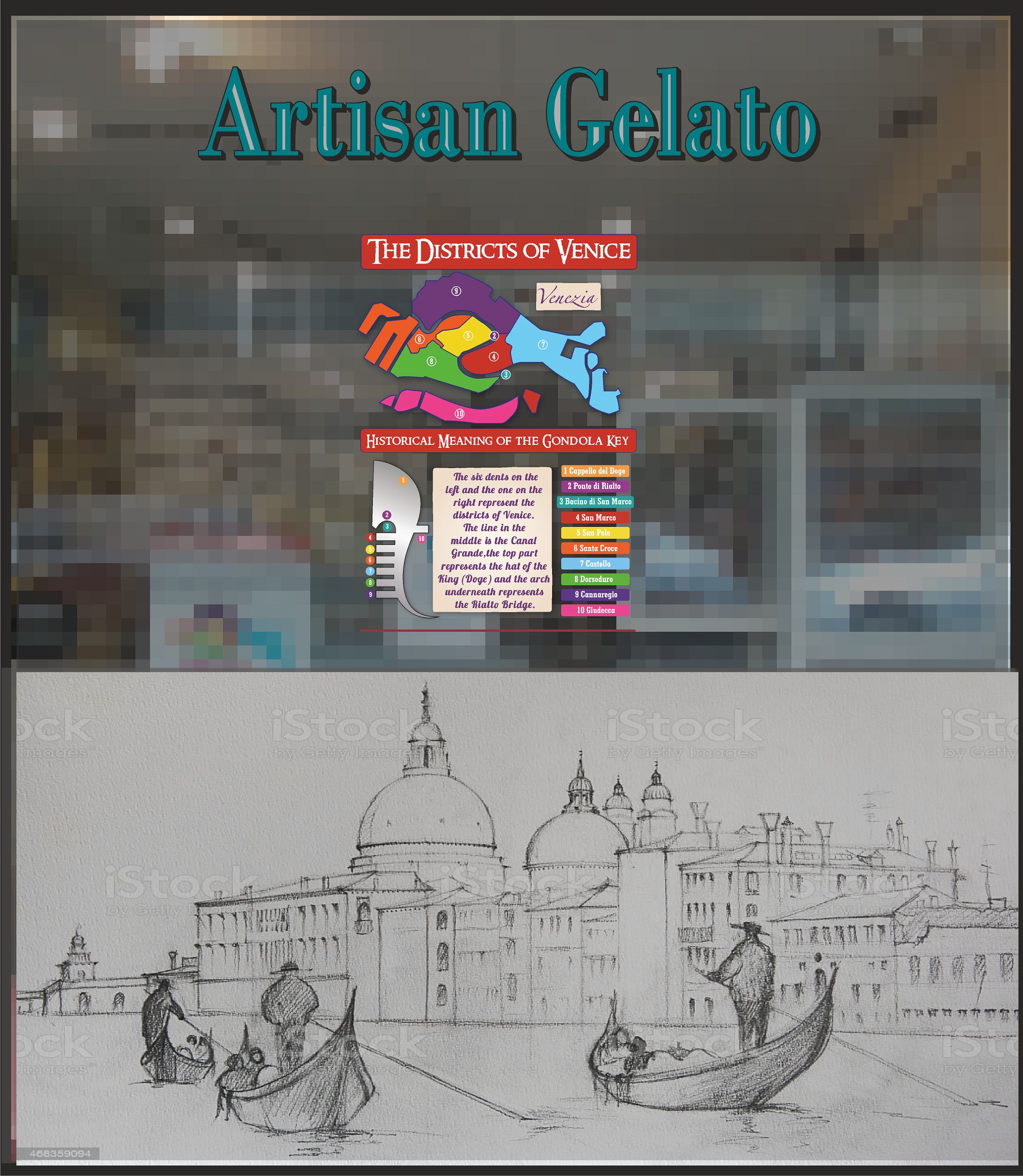
Luka
2018-09-26

Recently, Luca Zanini – Owner and Founder of Gelateria Gondola, returned to his homeland of Italy for a well-earned break. While he was there, he paid a visit to Squero San Trovaso in Venice to see how gondolas are made.
A squero is a traditional shipyard where gondolas (and other small boats) are built and repaired. Squero San Trovaso dates back to the seventeenth century and is one of only a few squeros still in operation today. The squerarolo still make every gondola by hand using traditional tools and techniques to meet the specific needs of each gondolier. Gondolas are made of 280 hand-made pieces using eight different kinds of wood – lime, oak, mahogany, walnut, cherry, fir, larch and elm.
The first mention of gondolas came in 1094 as a simple means of transport around the canals of Venice. They later appeared in paintings by Canaletto, Carpaccio and Bellini though by the 1500s they had become increasingly ornate and ostentatious luxury vessels. The embellishment of gondolas got so over the top that in 1562, the Senate issued a law to end the exuberance by requiring all gondolas to be painted black. That tradition has remained to this day.
Gondolas continued to grow in popularity. It is estimated that there were up to 10,000 gondolas crowding the Venetian canals between the 17thand 18thcenturies. Evolution in boating technology led to an eventual decline in numbers. These days, there are approximately 400 but they are almost all used for tourism.
Although elements of gondola design have varied over the years, today’s gondolas very closely resemble the original boats. This is one of the reasons they have remained such a strong cultural icon of Venice. The most defining features of a gondola are their asymmetry, the fórcola, and the fèrro.
Gondolas have an asymmetrical design and weight to allow for the gondolier to stand to one side at the back to row. This is why gondolas are custom made for each gondolier – to ensure that the boat is balanced with their body.
The fórcola is also custom made to suit individual gondoliers. The fórcola is the oarlock and it allows to the oar (or rèmo) to sit in different positions so that the gondolier can masterfully maneuver between slow forward rowing, powerful forward rowing, turning, slowing down, rowing backwards, and stopping.
The fèrro is the ornament at the front of the gondola though it is as functional as it is decorative. Fèrro means iron though they are often made from brass, stainless steel or aluminium. They act as a counterweight to the gondolier at the back of the boat.
The curl of the fèrro represents the flow of the Canal Grande and the six prongs are said to represent the six districts of Venice. The island of Giudecca is represented by a tooth shaped ornamentation that sticks out backwards towards the body of the boat. The curved top signifies the Doge’s cap. The semi-circular break between the curved top and the six teeth is said to represent the Rialto Bridge.
Although gondolas are a synonymous with Venice, to us they are also represent the importance of craftsmanship, culture, tradition, excellence and joy – all of which we aspire to put into every scoop of our gelato.

